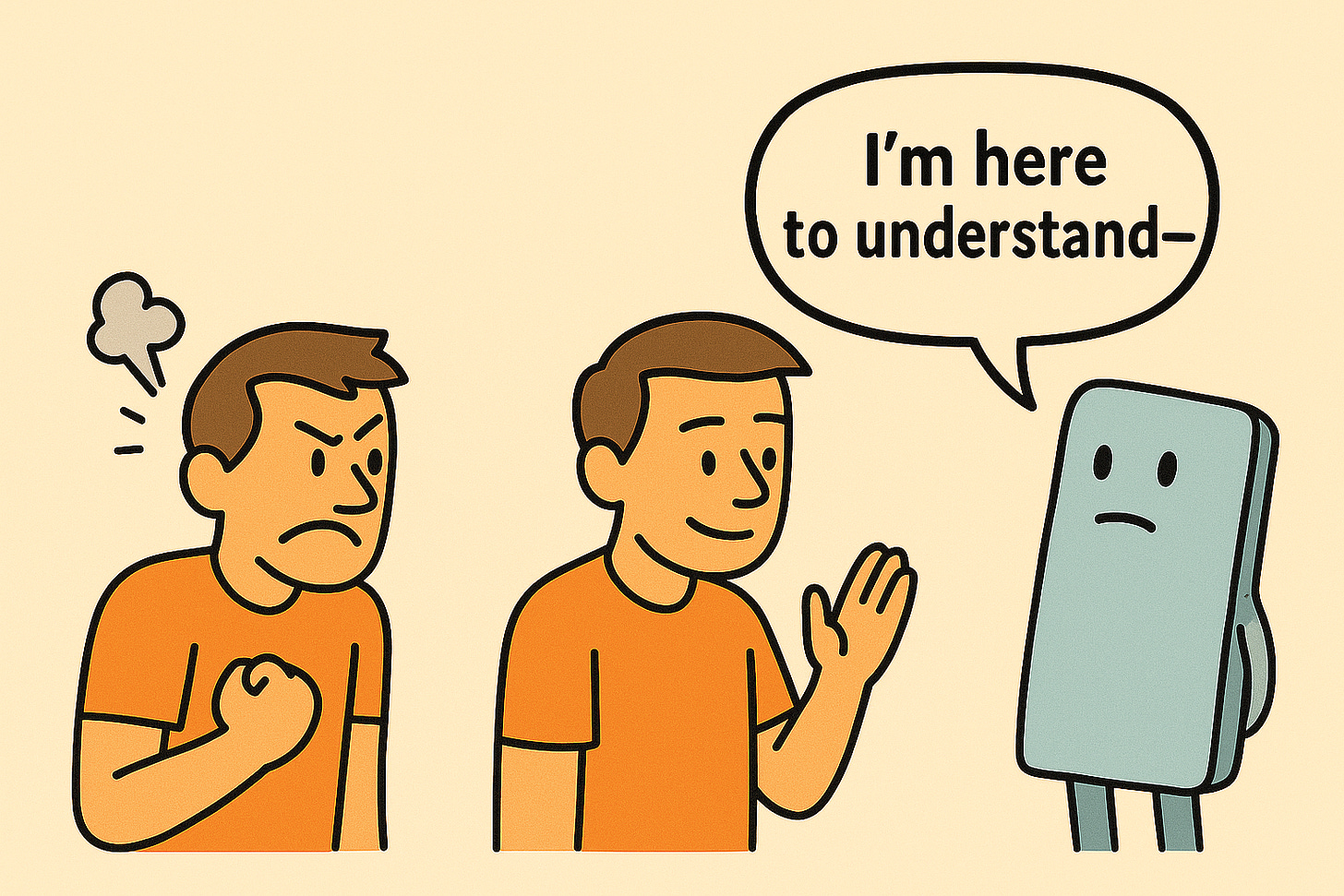🤝 “I’m Not Taking Sides” — How to Resolve Team Conflicts Without Playing Referee
Every manager eventually gets the knock.
Two team members. One tension.
They both say:
“Can I talk to you for a minute?”
And you already know — this isn’t about sprint planning.
It’s about a disagreement.
A misunderstanding.
Or worse: silence, assumptions, and passive friction that’s slowing the team down.
🧠 What Not to Do:
Don’t jump in with the solution — even if it’s obvious.
That’s the biggest trap: trying to solve the conflict like a bug in production.
But humans aren’t functions.
And most conflicts aren’t about facts — they’re about interpretation, tone, and ownership.
✅ So What Should You Do?
You create a space where resolution can happen — without fear, without blame, and without sides.
Here’s how:
1. Create a neutral room, not a courtroom
Don’t position yourself as the judge.
Instead, be the host of a space where both people feel:
Safe
Heard
Not under a spotlight
“I’m here to understand — not to assign blame.”
That one sentence opens the door.
2. Don’t paraphrase — facilitate directly
Avoid becoming the messenger:
“So what I’m hearing is… you feel he didn’t include you.”
Instead, say:
“Would you mind explaining that to her directly?”
Make them speak to each other — not to you.
This keeps the ownership of communication where it belongs.
3. Don’t offer the fix (yet)
Even if you know the answer — don’t solve it for them.
Why?
Because that:
Robs them of learning how to work through discomfort
Makes you the dependency
Makes one side feel “overruled”
Instead, ask:
“What do you think would make this better?”
“How do you want to move forward?”
“What does resolution look like for both of you?”
Let them build the bridge.
4. Model respect and calm
Even if voices rise — don’t match the energy.
Hold steady.
Stay curious.
If needed, pause and say:
“Let’s slow down — I want to make sure we’re focused on understanding, not winning.”
Conflict feels hot.
Resolution happens when someone brings the temperature down.
5. Follow up — but don’t babysit
After the talk, check in privately:
“How are things feeling after the discussion?”
Don’t hover.
Don’t rehash.
Just stay available and accountable.
If things improve, call it out:
“I noticed you both collaborated really well on that last ticket — appreciate the reset.”
🧠 Final Thought
Resolving conflict isn’t about fixing people.
It’s about creating a space where people feel safe enough to fix things together.
You’re not the referee.
You’re the facilitator of trust.
And sometimes, the most powerful thing you can say as a leader is:
“I’m not here to decide who’s right — I’m here to help us move forward.”
